The Top 15 Captured Warplanes

The Soviet MiG-15 scared the bejesus out of US pilots in the Korean War. It was equal to the best American fighter, the F-86 Sabre, and in some respects it even had superiority. Nine years earlier, in 1941, Britain’s RAF faced an even more challenging inequity with the arrival of the formidable Focke-Wulf Fw 190. Countering these threats meant knowing their strengths and weaknesses inside out, and the only way to do that was to get hold of the aircraft in question and fly it. Whether by pilot incompetence, subterfuge, political or personal asylum seeker or good fortune, enemy aircraft were delivered into the hands of their opponents.

15. Soviet F-5E ‘красный тигр’
Much has been written about USAF’s secret fleet of Soviet fighters, but far less known is the counter story of the American fighter that ended up deep in Russia during the Cold War.
We can only bring you articles like this with your support. Our site is absolutely free and we have no advertisements (any you do see, are from WordPress). If you’ve enjoyed an article you can donate here.
At the end of the war in Vietnam, the USSR received several samples of US aviation equipment captured by the victorious Vietnamese communists, among them was a F-5E light fighter-bomber (of a total of 27 that the North Vietnamese found). The F-5E, serial number 73-00807, was delivered to the Soviet Union. It was an extremely valuable intelligence coup that could tell the Communist super state much about American design and this mass produced aircraft’s capabilities, and how to counter it.

This exceptionally interesting trophy was sent to the VVS airbase in Chkalovsky before being transferred to the Akhtubinsk base. A test team comprised of engineering staff from an aeronautical research institute was formed to investigate, develop and test the American machine. The engineers and technicians were impressed by the design, and especially admired the F-5Es ease of maintenance and flying operation. The wing design also impressed the Russians for it conferred the F-5E with an impressive ability to fly at minimum speeds and high angles of attack.

From the end of July 1976 to May 1977, a full-scale flight test of the Tiger II took place at the air force research institute. Flying was carried out by two exceptionally experienced pilots, A.S.Byezhyevets and V.N. Kondaurov, both decorated Heroes of the Soviet Union.
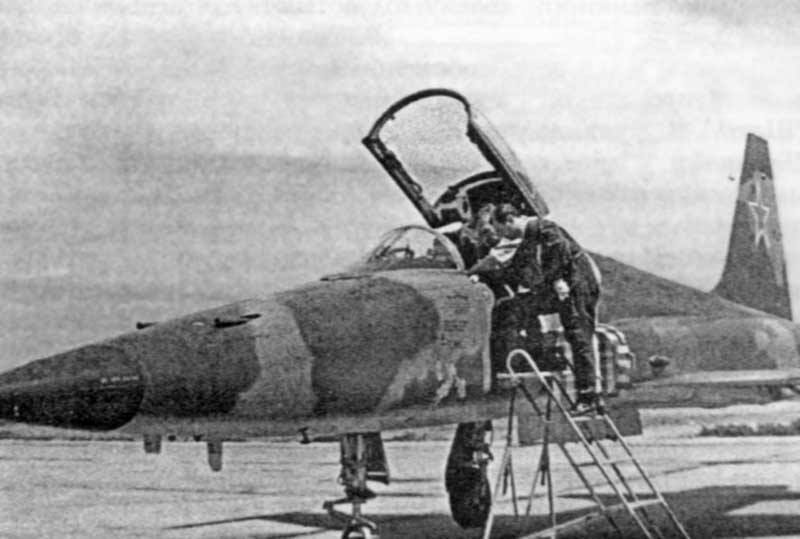
The results were shocking. In terms of manoeuvrability the F-5E was considerably superior to the Soviet MiG-21 fighter, a highly capable dogfighter itself. Further tests show a similar advantage over the most advanced Russian fighter, the MiG-23. However, the American plane was at a significant disadvantage in vertical manoeuvrability and energy compared to the MiG-23. Critically, it also lacked beyond visual-range medium-range missiles, something the MiG-23 did have.

The Central Aerohydrodynamic Institute (TsAGI) in Moscow performed static tests on the aircraft and the results were comprehensively recorded. Intriguingly, some of the design features of the F-5E made it onto the Soviet T-8 and T-10 projects (the latter becoming the famous ‘Flanker’).
In the 1990s the nose section of the aircraft was moved to a display area known as ‘Hangar 1’, which today is virtually impossible for outsiders to visit.
Rumours persist of Iranian F-14s and F-4s that were assessed behind the Iron Curtain but concrete evidence has not been produced.
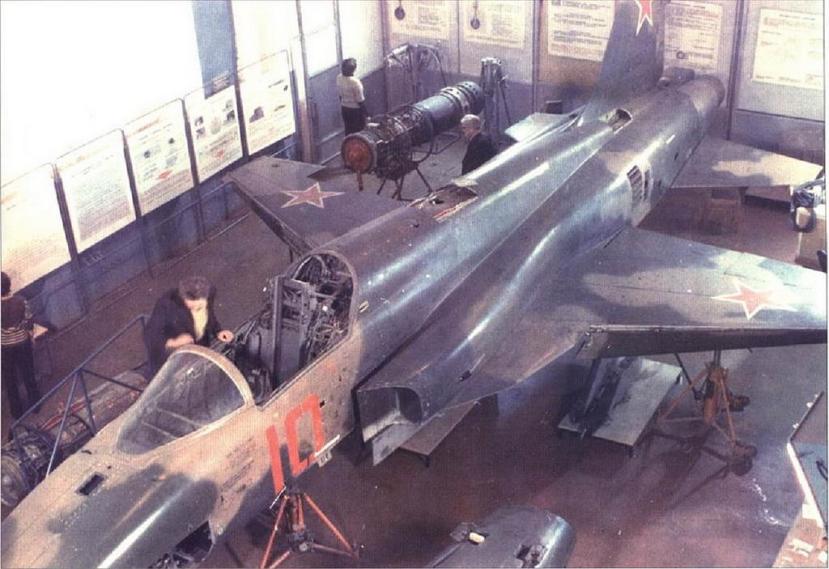
14. Lockheed F-117 Nighthawk
On 27 March 1999 a USAF F-117 ‘stealth fighter’ was shot while attacking a target in Yugoslavia. On May 7, 1999 the Chinese Embassy in Belgrade was bombed by USAF B-2s. It was said to be accidental but there was quite a few odd things about the attack (including the fact that the CIA had provided the co-ordinates despite the embassy being on a ‘no-strike’ list with correct co-ordinates at the time. The Chinese never believed the the US explanation of the event as an accident, and there is some anecdotal evidence that some of the wreckage from the F-117 was being held at the embassy. It is likely that the Yugoslavian government shared wreckage with both the Russian and Chinese governments. The degree to which this would have been useful is hard to ascertain.
13. USAF 4477th Test and Evaluation Squadron fleet/Constant Peg/’Red Eagle’
Ever wondered which aircraft had the missing ‘century-series’ designations between F-111 and F-117? It was a secret force of purloined Soviet designs operated from the enigmatic ‘Area 51’ used by the USAF for threat assessment and training. Sourcing, maintaining and flying these aircraft –in secret – for the years from 1980 to 1990 was an impressive, and often dangerous, undertaking. On 26 April 1984, USAF Lieutenant General Robert M. ‘Bobby’ Bond was killed while flying the unforgiving YF-113/MiG-23. A deliberately vague press release about the tragic event, that was unusual in not specifying the aircraft type, attracted press attention. Their findings were extremely useful, among them that the MiG-23 was an absolute pig,..but dangerously fast: a two-ship of MiG-23s that used speed to their advantage could be extremely potent. They also learnt never to get slow with a MiG-17.
Generally security was surprisingly good considering many US fighter pilots trained against the 4477th. A ‘foreign force’ remains active today which includes at least two ‘Flankers’, at least one of which is rumoured to have a missionized cockpit capable of simulating different ‘Flanker’ models sensors and capabilities.
YF-110B Soviet MiG-21F-13
YF-110C Chinese Chengdu J-7B (MiG-21F-13 variant)
YF-110D Soviet MiG-21MF
YF-113B Soviet MiG-23BN
YF-113E Soviet MiG-23MS NATO:”Flogger-E”
YF-114C Soviet MiG-17F
YF-114D Soviet MiG-17PF
12. RAF Focke Wulf Fw 190A-3

In June 1942, after shooting down a Spitfire, a Luftwaffe pilot named Armin Faber landed his Fw 190A-3 at RAF Pembrey in Wales (believing it to be France). Because of an unfortunate inability to distinguish the Bristol Channel from the English Channel said Armin let his plane get into the grubby hands of the RAF, with barely a scratch. Given its total superiority to any Allied fighter then in service, this unexpected gift was insanely valuable to the technical experts of the RAF. In fact, so desperate were the British to get their hands on one that a Commando raid had been planned to steal an Fw 190 from a French airfield. This was immediately called off and a bunch of Allied test pilots enjoyed the delights of cutting-edge German engineering: note the distinctly smug expression of the pilot in the photograph. The Fw 190 gave British designers pause for thought, not least in its remarkable light weight when compared to the ever-larger fighters being developed by the Western Allies and its design directly influenced the Hawker Fury in particular.
Faber’s Fw 190 was painted in Darth Earth and Dark Green over Trainer Yellow undersides – the standard colour scheme for prototype, experimental and training aircraft and remained in these colours until at least the spring of 1944 when it appeared in a private colour cine film of a US airman. The curious thing aesthetically, is how much better it looks in British markings. The angular airframe is softened somewhat by the roundels and serve to make the aircraft look more noble than the Luftwaffe markings. In its standard German colour scheme the Fw 190 looks like a killing machine. This is of course totally subjective.
However, and very much to display how much different markings alter the character of any given aircraft, have a look at this Fw 190A-5 that was tested by the US Navy and repainted by them in their standard ‘Tri-Color’ mid-war scheme. No colour photograph exists of this aircraft so a picture of a scale model of the aircraft is also included (courtesy of Scott van Aken’s terrific Modeling Madness website) so you can see just how insane it looks. Wearing colours that we are used to seeing on rotund Corsairs and Hellcats serves to emphasise the diminutive size of the Focke-Wulf and just how angular and neat it is.

The windscreen of Armin’s actual Focke-Wulf (he visited in 1991) may be seen at Shoreham Museum.
11. Luftwaffe Supermarine Spitfires

Faked “combat” photograph from the Federal German Archive of a Spitfire attacking a Do 17. Note the spurious roundel position on the wings.
Look at this to see one of at least thirteen Spitfires unintentionally transferred to the Luftwaffe inventory ‘attacking’ some German bombers in a staged propaganda film. Sloppy looking stuff. By 1965 even the youngest plastic model aircraft kit builder was doing a better job with early model Spitfires than these guys. Perhaps they were just in a rush.
However, the Germans were not just using their recently acquired Spitfires for spurious battle footage though. For reasons unknown* they also decided to re-engine a Spitfire V with a Daimler-Benz DB 605. The fuselage profile was found to be near identical to the Messerschmitt Bf 110, facilitating the installation but new engine mounts had to be fabricated and the whole aircraft rewired to accept a 24 volt electrical system instead of the Merlin’s standard 12 volt output. Despite there being no record of quite why they did this, the performance of the new ‘international’ Spitfire variant was recorded and we know that it was superior to the standard Spitfire V, not just in speed and climb but apparently in handling as well, one Luftwaffe pilot describing it as “a dream of an aircraft”. Sadly it was destroyed by US bombing in 1944.
*This has now been answered: In Calum E. Douglas’ ‘The Secret Horsepower Race’ notes “Nallinger defended the size of his radiators his engines required relative to the British engines to Professor Messerschmitt, attributing poor cooling performance to the position of the radiators on the aircraft itself. Later, to clear up the the point, Daimler-Benz would attempt a direct comparison of the Spitfire and Messerschmitt cooling systems using a captured Spitfire..”

Sighting opportunity: Science Museum, London, England
10. Imperial Japanese Army Curtiss P-40E

Japan captured about ten flyable P-40Es, this one was used for training by the Akeno fighter school. A teensy clue as to its previous ownership may be seen showing through the Japanese markings.
Quite why the Japanese Army decided to use three captured P-40s operationally is something of a mystery (for a start where would they get the right spanners?). Nonetheless the fact remains that the Japanese air defence of Rangoon in Burma was (partly) handled by the 50th Hiko Sentai equipped with three of Curtiss’s finest at Mingaladon airfield. The obvious potential pitfalls of this kind of thing were dramatically demonstrated on the night of the 21st of March 1943 when a formation of Mitsubishi Ki-21 bombers returning from a raid were diverted to Rangoon and intercepted by the P-40s, damaging two and causing one to crash land with the loss of four crew. This seems very much like adding insult to injury as the very same aircraft had been intercepted by American P-40s over their target. It would appear that the P-40s were simply unable to stop shooting down Japanese aircraft even when flown by Japanese pilots. Perhaps because the P-40 sported so many different schemes during its remarkable career, the Japanese markings don’t massively jar the eye in the case of the Curtiss.
Nice Australian Kittyhawk may be seen at: Australian War Memorial, Canberra
Sadly, this site will pause operations in mid June if it does not hit its funding targets. If you’ve enjoyed an article you can donate here.
9. Rudolf Hess’s Messerschmitt Bf 110C VJ + OQ

Rudolf Hess in happier times (for him at least)
Insane aircraft are brilliant. But what if it is the pilot who is mad? Does an aircraft count as captured when it has been wilfully given to your side and is wrecked on arrival? What then to make of Hitler’s pal Rudolf Hess’s Messerschmitt Bf 110?
The Zerstorer is among the premier aircraft of the 1939-45 air war. Of all this type’s adventures its most singular is the flight of top Nazi playa Rudolf Hess across the North Sea on an unauthorised peace mission. For his trouble, Deputy Fuehrer Hess was rewarded with imprisonment into and then beyond the age of ABBA. Children evacuated to a dairy estate from inner Glasgow in 1941 remember the excitement of Hess’s not bizarre and sudden arrival in their area like it was yesterday. Pieces of the Bf 110 in question may be seen in various locations.

One of the bigger bits.
8. KG-200’s Boeing B-17 Flying Fortresses
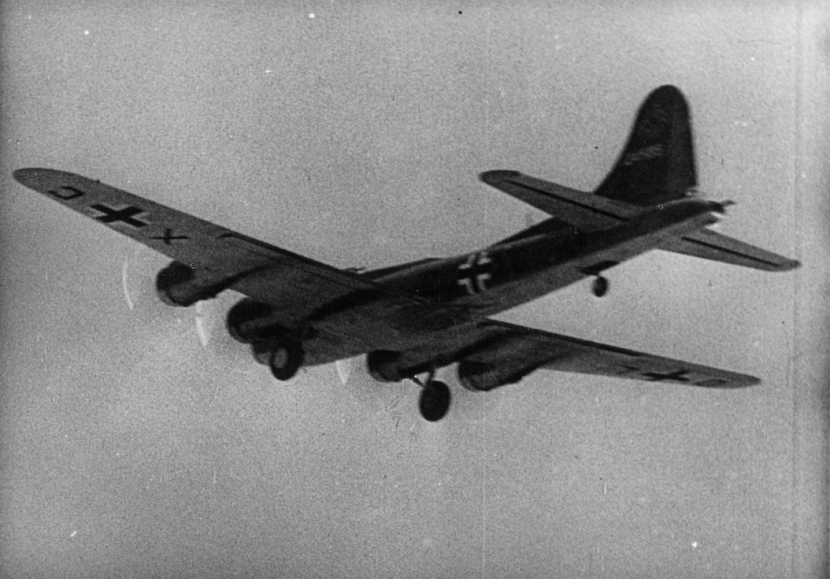
An Axis fighter pilot’s first encounter with the Boeing B-17 Flying Fortress was usually a sobering one. Those pilots were awed by the sheer size of the Fortress, its enormous defensive firepower, and the speed and altitude they could operate from. As soon as possible, wrecks were scavenged and eventually flying examples were Frankensteined into service. The Luftwaffe maintained an entire structure throughout the war just for such tasks that eventually handled a whole swathe of non-German aircraft. Under escort and carefully pre-cleared with air defences, captured B-17s were flown around the Third Reich for research and training purposes. They were done up in sadly unimaginative colour schemes with yellow tails and exaggerated markings.

World War II was a golden age for captured warplanes but operational use of them was exceedingly rare. Kampf Gruppe 200 offers something of an exception utilising B-17s in particular on long-range reconnaissance missions and for minor special forces work. Even by Internet standards the details remain sketchy but the latter seems to have included dropping SS parachute formations into central France in 1944 to attack resistance fighters. Luftwaffe markings seem to make the B-17 look even bigger than it actually is.

7. Liaison types: USAAF/Luftwaffe/Danish Piper J-2 Cub, RAF Fieseler Fi 156 Storch

“Shall we paint out the swastika as well as the crosses?” “Nah, just stick ‘Don’t Shoot! USA’ on the nose, that’ll be better” (photo courtesy of the Piper cub Forum)
Strangely everyone in the Second World War seemed to regard the light aircraft of the other side as better than their own. A proven design when the war started, the Piper Cub, in militarised form as the L-4 Grasshopper, was perfect for the low-and-slow jobs of mid-century warfare. These included scouting, target marking and intelligence gathering duties, VIP transport, mail runs and even stringing field telephone cable. Hence the sensible thievery of the Luftwaffe in helping themselves to several Danish-built examples when they occupied Denmark in 1943. Sensible also were the US Army personnel who stole one right back in 1945. Did they give it back to the Danes come VE Day? Did they bollocks. Luckily Piper Cubs are usually not hard to find today. It is facetious to state that the Germans were the ‘baddies’ in 1939 to 45 but it is amazing how this innocuous aircraft is rendered ‘evil’ by slapping a swastika on the tail.
Meanwhile, Fieseler Storches were in demand by every Allied General worth his salt. Countless examples were snaffled up all over the place such as this excellent example painted with probably the worst executed RAF roundel in history. To be fair they probably had more important things on their mind than doing a neat and tidy circle. But still.

“Shall we draw it on in pencil first?” “No what for?”
6. ATAIU-SEA Mitsubishi A6M5 Zero

“I tell you what’d be funny: Let’s just fly to Pearl Harbor and see what they do”
When these Zeroes were captured in 1945 they were pressed into service by the Allied Technical Air Intelligence Unit, South East Asia (ATAIU SEA). Its technical weaknesses were well known by VJ day and the Zero had been largely outclassed by the Hellcat and Corsair. These aircraft were flown by Japanese pilots and used to inform remote Japanese units of the end of hostilities. Most Japanese aircraft only ever wore Japanese markings so seeing these Zeroes in British markings really makes them look profoundly different, despite the standard IJN green scheme. Even more so perhaps, are these Mitsubishi J2M Raidens which look positively cuddly sporting their new identities.

Part of one of the Zeroes on the photograph is preserved at: IWM London
5. US MiGs

Under constant guard by Air Police at a U. S. Air Force installation on Okinawa, reassembly of the MiG-15 is completed on the flight line. After careful ground testing, the Russian built fighter was flown by five U.S. Air Force pilots during a week of extensive tests. (USAF Photograph)
After the Berlin airlift of 1948 the Cold War would get out of hand again in Korea. Western airmen flying for the United Nations were made very uncomfortable indeed by the MiG-15. So when the USAF got their hands on one in the autumn of 1953 they sent for the very best they had. The job of assessing the MiG-15 went to Chuck Yeager. Terrible weather and the paucity of information about the Russian jet made for a rough, rushed assignment retold in Tom Wolfe’s book ‘The Right Stuff’. The MiG-15 was found to have some important advantages over western fighters but also specific weaknesses. And thus a very expensive race for technical domination in Cold War skies was kicked off. Helpfully for everyone the USAF a short film detailing their findings which may be viewed here. Of all the aircraft on this list the MiG-15 is the one you and your mates actually stand a reasonable chance of buying.
Sadly, this site will pause operations in mid June if it does not hit its funding targets. If you’ve enjoyed an article you can donate here.
As you can be seen, the MiG-15 in US markings doesn’t differ massively from the MiG in Soviet markings. Bare metal and stars. It could quite easily be an obscure early fifties US fighter prototype. Likewise, when they got their hands on a MiG-21, it could be an obscure late fifties US fighter prototype. Why go to the trouble of getting the premier Soviet fighter at the height of the Cold War then make it look so boring?

“Here I am, flying the plane”
4. Messerschmitt Me 163B-1A Komet

Kaptured Komets in the West and East respectively.
Komets were bagged in numbers by the western Allies in 1945. A further tiny handful went to the USSR. Radical in design, the Komet had a novelty factor that remains intact to this day. The fastest aircraft of the war represented a mixture of the futuristic with miserable Fascist policies. As the Third Reich met it’s end a quasi-secret array of ridiculously high potential weapon systems was revealed. Prototypes and research findings from these programs would come to be absorbed into the technical mainstream of the victorious countries and examples of the Comet are on display in Australia, Germany, the UK, and the United States so you have a reasonable chance of seeing one wherever you live. Two seized Komets also found their way to Canada and the one at the Canada Aviation and Space Museum reveals something of the social state of things in the Thousand Year Reich. During a restoration in the 1970s it was discovered that French workers had sabotaged its Walter engine and the glue holding the aircraft’s laminated wood wings together. They also drew a cartoon inside the aircraft telling us their heart’s were not in it. If war takes the fun out of something like the Komet, you know it’s bad. Post capture, in RAF colours the Komet looks kind of cuddly but strange. Soviet stars on the other hand suit the ‘power-egg’ down to the ground.
We sell fantastic high quality aviation-themed gifts here
3. Fokker D.VII 6810

Despite surviving the Great War this Fokker D.VII received its worst damage in the 1920s when a cleaner accidentally put a broom through it. Go and see it at Brome County Historical Society.
Do you think you would like to see a Great War aircraft still wearing its original doped fabric covering? Especially if it was widely acknowledged to be the finest combat aircraft of that conflict? Thanks to this business of capturing flying machines you can. When it is safe to do so you must travel to the Lac Brome region of Canada’s francophone province, Quebec. There, the museum of Brome County Historical society preserves one of only five surviving Fokker D.VIIs in the world and the only one preserved in its original four-colour lozenge fabric. This aircraft was put in the museum in 1921 when many D.VIIs were still in front line service and as such is a remarkable time capsule.
Back in 1918 though, so taken were the Allies with the D.VII that this example was apparently used to reconnoitre enemy positions, in 3D!

Image Courtesy of National Galleries of Scotland
2. Italian Hawker Hurricane

To the victor go the spoils. However, occasionally you get a spoil or two even when you aren’t very often the victor. Have a look at this Italian-owned Hawker Hurricane, acquired not from the RAF but from the Yugoslav air force. Italian colour schemes were impressively original at the best of times and seeing so familiar a shape as the Hurricane in a natty Regia Aeronautica paint job is eccentric in the extreme. So unusual was it that even il Duce himself came to have a look at it. Although the exact shades are unknown it is clear that there are three camouflage colours on the upper surfaces and it looks to have been very carefully done – not the upper colours extend right over the leading edge. The nose appears to be yellow.
Hurricane sighting opportunity: Cosford, England
1. Viktor Belenko’s Mikoyan-Gurevich MiG-25 Foxbat

From Viktor, the spoils. Appropriately grainy picture of Belenko’s Foxbat on the grass at Hakodate airbase, Japan.
Where else can we find the little Piper Cub on the same top list as the hunch-shouldered fire breathing dragon that is the Foxbat? Well, if not for one of the more dramatic, yet totally unscripted moments of the Cold War, the answer would be nowhere. Without even stealing so much as a map beforehand, a Soviet fighter pilot with emotional problems, one Viktor Belenko, went screaming off at wave top height in a stainless steel superfighter.

Viktor’s ID. Now held by the CIA museum in Langley, Virginia, USA.
He was defecting in a beast built to kill SR-71s and XB-70s that is eight feet longer than a Handley-Page Halifax. A Foxbat once blew off an Israeli intercept attempt at Mach 3. Are we hyperventilating yet? The crudity of the MiG-25 was revealed by rapidly dismantling it after a quick check for explosive booby traps tucked in among its vacuum tubes. Thus reduced to junk the big MiG was sent back to the USSR in a box. Tucked inside was a bill for forty thousand dollars worth of damage to runway 20E, much perimeter fencing and an adjacent miniature golf course caused by the big interceptor’s arrival at Hakodate, Japan. Who can ever forget that crazy day in 1976? Certainly not the mini-golfers.
Sighting opportunity: Indian Air Force Museum, Palam
By Stephen Caulfield, Ed Ward & Joe Coles

This book can only happen with your support. Preorder your copy today here.

From the cocaine, blood and flying scarves of World War One dogfighting to the dark arts of modern air combat, here is an enthralling ode to these brutally exciting killing machines.
The Hush-Kit Book of Warplanes is a beautifully designed, highly visual, collection of the best articles from the fascinating world of military aviation –hand-picked from the highly acclaimed Hush-kit online magazine (and mixed with a heavy punch of new exclusive material). It is packed with a feast of material, ranging from interviews with fighter pilots (including the English Electric Lightning, stealthy F-35B and Mach 3 MiG-25 ‘Foxbat’), to wicked satire, expert historical analysis, top 10s and all manner of things aeronautical, from the site described as:
“the thinking-man’s Top Gear… but for planes”.
The solid well-researched information about aeroplanes is brilliantly combined with an irreverent attitude and real insight into the dangerous romantic world of combat aircraft.
FEATURING
- Interviews with pilots of the F-14 Tomcat, Mirage, Typhoon, MiG-25, MiG-27, English Electric Lighting, Harrier, F-15, B-52 and many more.
- Engaging Top (and bottom) 10s including: Greatest fighter aircraft of World War II, Worst British aircraft, Worst Soviet aircraft and many more insanely specific ones.
- Expert analysis of weapons, tactics and technology.
- A look into art and culture’s love affair with the aeroplane.
- Bizarre moments in aviation history.
- Fascinating insights into exceptionally obscure warplanes.

The book will be a stunning object: an essential addition to the library of anyone with even a passing interest in the high-flying world of warplanes, and featuring first-rate photography and a wealth of new world-class illustrations.
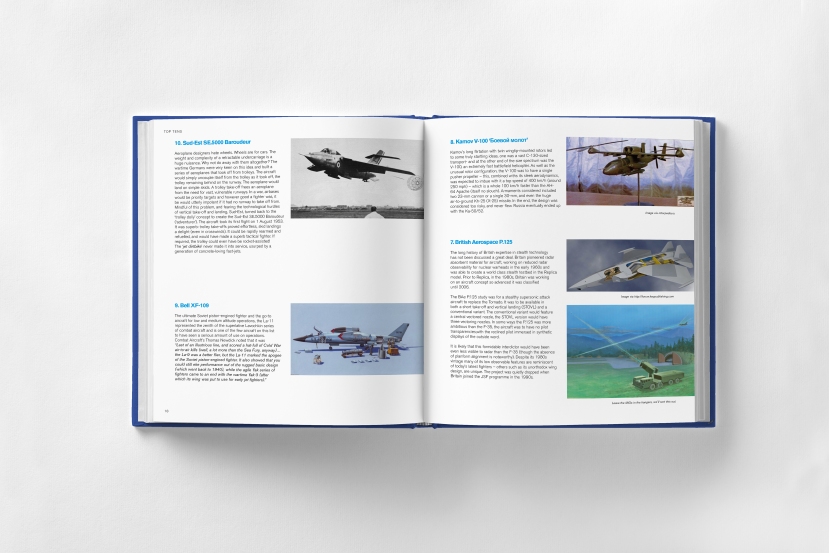

Fairchild AU-23A Armed Pilatus Turbo-Porter 72-3 Janes – Sufficient put into service to not be relevant.
*Pave Coin Beech A36 Bonanza Janes 72-3. Other aircraft included the Piper PE1 Enforcer (turbine Mustang) – Janes 81-2, AU-23 and 24 (above), Cessna O-1, U-17 and O-2 and Cessna A-37.
SAAB-MFI-17 (only 300kg external load capability) 72-3 Janes
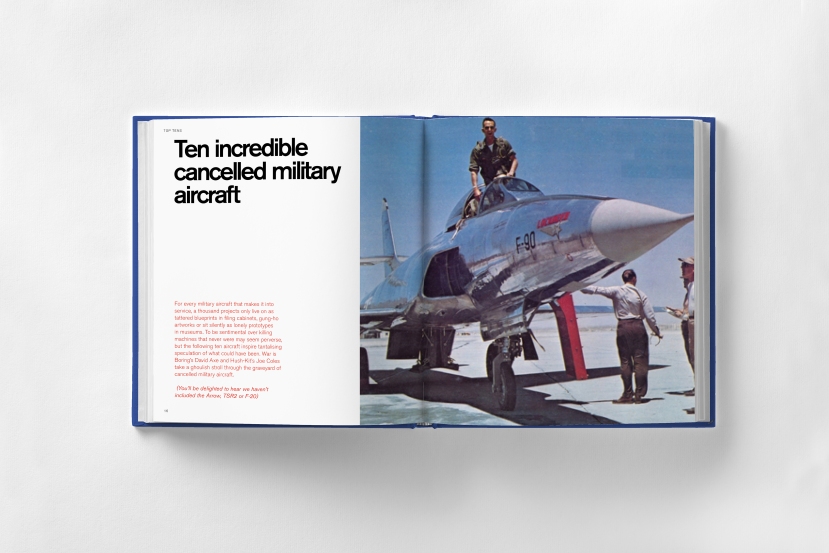
This book can only happen with your support. Preorder your copy today here.


You have done some great articles , including this one , would love to have these in published form , magazines , these articles are much better than flypast or aerplane magazine i think they would sell very well
Thanks Graham! You may be interested in our book: https://unbound.com/books/hushkit/
I have a photograph of a German bomber (Do 17 I think) in RAF colors parked at RAF Chivenor. There is also a photo of a newpapaer clipping explaining how the pilot got lost and possibly mistook the north Devon coast for the coast of France. My father was in the RAF stationed at Chivenor during WWII.
Just checked the picture and it’s a Junkers 88 not a Do 17.
Please do share
V. cool. Thank you for sharing. sc.
The bill Japan presented the Soviet Union with concerning the wayward Foxbat wasn’t just for damages. They also wanted a packing fee in return for stuffing the taken-to-bits Foxbat into a total of 30 crates.
In return, the Soviets demanded a payment of $10 million dollars due to the fact that 20 parts were missing, most importantly the film record of the flight to Hokodate.
Both invoices are still outstanding.
The bill Japan presented the Soviet Union with concerning the wayward Foxbat wasn’t just for damages. They also wanted a packing fee in return for stuffing the taken-to-bits Foxbat into a total of 30 crates.
In return, the Soviets demanded a payment of $10 million dollars due to the fact that 20 parts were missing, most importantly the film record of the flight to Hokodate.
Both invoices are still outstanding.
Frankly I’m a bit disappointed that the Pucará didn’t make it to the list but…. excellent list anyway!
Fair comment about the Pucara. Gary Powers’ U-2 might have squeaked in as well.
I seem to recall reading about how the USSR acquired a F-86 during the Korean War. Somehow or another one landed itself on a tidal flat after the pilot baled out. Koreans recovered it before we could bomb it, and it wound up flying and being most closely studied by the USSR aviation boys, who allegedly learned a large amount from it. This is a story that needs more telling.